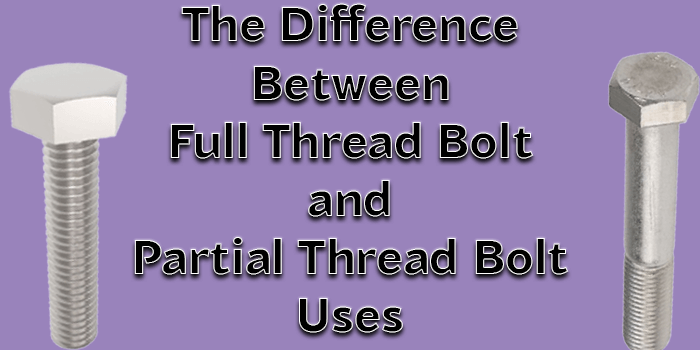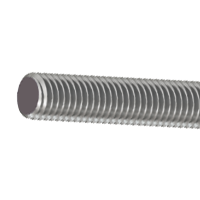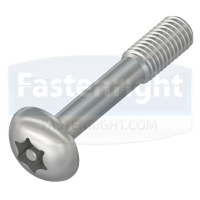When the application you are working on requires very specific parts, there are a number of decisions that need to be made before parts are installed. Choosing the right screw or bolt is not the easiest of choices, and fully considering what the job at hand requires is of importance.
Often, the application will require deep consideration of the specifications, grip, load distribution and much much more. One important thing to consider is whether the thread of the screw or bolt needs to be a full thread or a partial thread.
What Are Full Thread and Partial Thread Bolts Used For?
The kind of bolt which you select is all about the fastening type that is required for your application.
Partial thread bolts are often used within the automotive industry within alternators, motor mounts and water pumps – all of which require high precision and extreme holding force. These type of applications require precision to achieve the type of alignment required for the best possible fastening.
When partial thread bolts are tightened, their grip length is drawn tight into the hole, pulled by the threads that are exposed – creating the resulting force that is needed to hold motor mounts securely.
Full thread bolts are for applications that require more grip strength. These can also be used within the automotive industry in parts such as body panels, which do not require the same level of holding force that motor mounts need.
Fully threaded bolts extend holding force across the entire shaft, whilst part threaded bolts have holding force at the threaded tip.
More Information on Partial Thread Bolts
Partial thread bolts host an area below the head of the bolt that is completely devoid of threading, which is what gives them their ‘partial’ name.
The area that is devoid of threading varies in length, with different lengths being used across different applications.
Partial thread bolts are known for providing resistance and alignment. When the application requires a large amount of force to hold an object in place, these bolts are able to provide the required resistance – with the non-threaded portion hosting no weak spots that could potentially shear.
More Information on Full Thread Bolts
Full thread bolts have no thread-free portion, meaning that the threads run from under the head to the tip.
When alignment and shear strength are not as heavily required, a full thread bolt will be the better option. The full thread bolt provides exemplary grip strength.
A full thread bolt – once mounted – spreads the pressure along the entire length of the fastener. The highest amount of pressure is placed on the head of the bolt once it meets the material in which it is fastened.
Choosing between Partial Thread or Full Thread
It is important to consider what your application needs, whether it needs grip strength or maximum resistance.
If it is grip strength that is required, then a full thread bolt made of whichever material your application requires. For resistance, it’s the partial thread bolts.
Contact us for more on Partial Thread or Full Thread Bolts
If you require more information or have any questions about partial or full thread bolts, we are always able to help.
We supply a wide range of bolting products.




